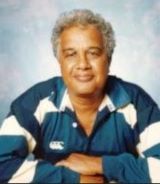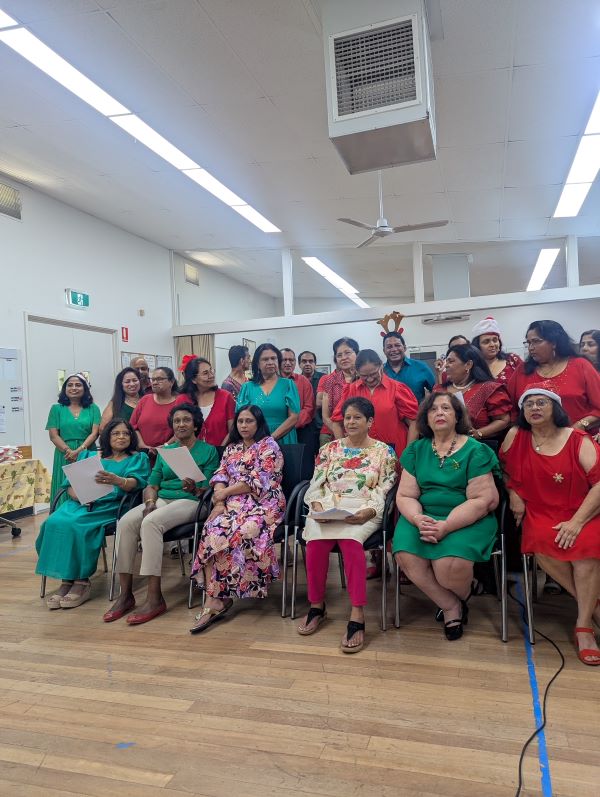Early Writing: The Evidence from Sri Lanka-by Michael Roberts

Source:Thuppahis
Darshanie Ratnawalli, here reproducing an article presented in the Colombo Telegraph and The Island in June 2016, where the title runs “Sri Lanka’s role in South Asia’s earliest writing controversy”
A few years ago someone came up with the campaign line ‘small miracle’ as a unique proposition to promote Sri Lanka to tourists. The Rajapaksa Government took exception to the ‘small’ and scrapped the campaign midway. This was a pity. The country has genuine small miracle credentials, tending sometimes to raise eyebrows by producing phenomena usually deemed too big, too grand for a country of its size. It can for example claim ownership of the oldest surviving, reliably dated samples of writing to be found in the whole of South Asia.
It was long thought that the earliest writing in South Asia were the inscriptions of the Indus Valley civilization. Now with the 2004 debut of an authoritative and persuasive academic thesis by Steve Farmer, Richard Sproat and Michael Witzel, the word in the street (a metaphorical street populated with academics) is that this ancient urban civilization that sprawled across Northwest South Asia and had its flowering phase between 2600 and 1900 BC lacked writing.
“A voice from the street” — The 2004 publication of a paper by Farmer, Sproat and Witzel in the Electronic Journal of Vedic Studies has made available the results of careful statistical studies which have analyzed sign repetition rates in the Indus inscriptions and claim to show that it is not possible that the so-called Indus script could have encoded language. They propose rather to see the signs as cultic emblems of particular deities and the like, pointing to parallel widespread use of such symbols in the Near East and elsewhere.
“It seems clear that their analysis shows beyond reasonable doubt that the script used in the extant inscriptions cannot be either alphabetic or syllabic” – (‘The Early Development of Buddhist Literature and Language in India’, L.S. Cousins, 2013)
The premise of an illiterate Indus Valley civilization contained in ‘The collapse of the Indus-Script Thesis: The Myth of a Literate Harappan Civilization’ has tremendous implications for Sri Lanka. If the oldest South Asian symbol system unearthed so far, going back to 3000 to 2000 years before Christ, was nonlinguistic, invested with cultish, clannish and mythological significance, instead of a true script encoding speech, that means South Asians remained illiterate until the middle of the first thousand years before Christ, when according to accepted wisdom, writing was first introduced to North-West South Asia by the Persians. This accepted wisdom flows from a logical surmise. That is, we know that around 518 BC, certain territories in South Asia became part of the Persian Empire and as Persians were already writing with the Aramaic script by this time, historians assume the inevitable; “Once the north-west of India had become part of the Persian empire, if not before, writing would have been employed by the Aramaic scribes in that area, and it’s hard to believe that neighbouring rulers would not realize the advantages of keeping records of regnal years and royal accounts, and treasury and armoury details in some tangible form”- (K. R. Norman reviewing in 1993, ‘The beginning of writing and early literacy in India’ by Oskar v. Hinüber).
However, concrete evidence for the prevalence of writing in North West South Asia during Persian times has not been unearthed. “Similarly, although the Gandhara area had been a part of the Persian Empire since the time of Darius [522-486 BC], there are no remains of pre-Asokan Aramaic inscriptions from that area, presumably because such records were written on ephemeral material. Only kings had inscriptions carved on rock… ” ( K.R. Norman, 1993)
Didn’t the Aramaic scribes of the Persian territories of South Asia during the mid-first millennium BC write on potsherds? Apparently “[Potsherds] were among the most popular media for writing medium-size (and often quite long) texts even in ancient civilizations that wrote extensively on perishable writing materials; the reason for their popularity lay in their easy availability and in the fact that most perishable writing materials (including bark and palm leaves, which were favored in later India) required elaborate preparation before they could be used.”- (‘The collapse of the Indus-Script Thesis: The Myth of a Literate Harappan Civilization’)
As no pre-Asokan (pre 250 BC) potsherds with writing have been discovered in the North West, we can perhaps conclude that the scribes in the South Asian parts of the Persian Achaemenid Empire didn’t really need easy writing solutions such as potsherds. The area may have been cautious, restrictive and selective in adopting the new art of writing due to strong traditions of transmitting texts orally. Maybe because writing was not widespread or frequent, the writers didn’t mind waiting out the elaborate preparation process that perishable writing materials demanded. Perhaps they thought potsherds lacked gravitas. Whatever their reason for not writing on durable media, it leaves us without actual evidence to back the strong surmise that North West South Asia wrote between 6th and 4th centuries BC, consequent to becoming a satrapy of a literate empire.
Before Sri Lanka unexpectedly came into the picture and supplied the earliest concrete evidence of a literate South Asia, the earliest evidence, albeit of a hearsay kind, of writing South Asians came from Greek sources who came into contact with the North West South Asia in fourth century BC. This is the statement of the Greek historians based upon the report by Alexander’s admiral Nearchos, that the Indians did not have written laws, but nevertheless wrote epistles on strips of cotton. The choice of cotton strips, a perishable writing medium, once again throws us upon the mercy of speculation. What was the script used to write these cotton strip epistles, nearly 200 years since the Aramaic script would have been officially introduced to that area?
One of the consequences of Persians introducing writing to North West South Asia is supposed to be the local folk deriving from the alphabet used to write Aramaic, the official language throughout the Achaemenid Empire, a local script called Kharosthi to write the local languages, i.e. North Western forms of middle Indu Aryan. That Kharosthi was the script used to write these epistles that the Greeks witnessed seems a reasonable surmise.
“As is well known, Asoka employed two different scripts for his inscriptions: Kharosthi in the north-west, and Brahmi elsewhere. It seems to be accepted by almost all scholars that Kharosthi is derived from the Aramaic script. It is noteworthy that the area of its usage is roughly co-terminal with the boundaries of of the pre-Alexandrian Persian empire in India. The view, held by some, that Kharosthi was invented only shortly before Asoka is hard to reconcile with the statement of the Greek historians based upon the report by Alexander’s admiral Nearchos, that the Indians did not have written laws, but nevertheless wrote epistles on strips of cotton. This presumably refers to the north-west of India, and probably therefore to the Kharosthi script, and gives evidence for its use before 323 B.C. Similarly is Panini mentions writing, it is probable that, since he lived in the north-west of India, he was referring to the Kharosthi script.”- (K.R. Norman, 1993)
As will be clear from the above, a strong case can be made for the existence of the Kharosthi script, or an early form of it, more than a century prior to Asoka’s birth. But unfortunately due to the fact that south Asian literacy was not yet full-fledged enough to produce writing on durable objects such as potsherds, pots, sculptures, architectural elements, seals, rock faces, ornaments and funerary receptacles, we are denied concrete evidence in the form of surviving inscriptions. It was not until Asoka became emperor and wrote edicts on stone in Kharosthi in the North-Western parts of his empire that we get the earliest reliably dated samples of that script. Similarly with Brahmi, there has always been the persuasive surmise that it had existed for at least a century or more prior to Asoka’s reign. “It is an admitted fact that the Brahmi alphabet had several centuries of development behind it in the time of Asoka………”- (Paranavitana, 1970).
“A strong piece of evidence for the existence of Brahmi prior to Asoka’s time is the variety of forms found in the Asokan inscriptions, which do not fully agree with forms of Brahmi in early Sinhalese inscriptions. This implies a period of development.”- (Norman, 1993)
Of all the premises about the origin of Brahmi, one stands out as the most persuasive due to the nature of empire building. This is the premise that the Bhahmi script already existed by the time Asoka’s grandfather Chandragupta Maurya established his empire. The Maurya Empire commenced in 321 BC. Two years before, in 323 BC, Alexander had died on his way back home from South Asia. Shortly before that Alexander’s admiral Nearchos had experienced the prevalence of writing presumably in the part of South Asia that the Greeks had dealings with; i.e. the North West. We have then an emperor, Chandragupta, who commences his empire with the advantage of a viable indigenous script in one part of his empire. If the other part had no script, no writing, there was only one course open to him as an emperor, an agent of unification; [namely] introducing the existing script to the rest of the territories. We know that this did not happen, because his grandson Asoka had to carve his imperial edicts throughout his empire in two different scripts. That Chandragupta had no opportunity to make a single imperial script current throughout his empire could only have been because he found another script, Brahmi already current throughout the other parts of his empire by the time it included the North West and Kharosthi. This persuasive argument comes to us courtesy of L.S Cousins, 2013;
“A different, historical argument also suggests to me that the Brahmi alphabet is unlikely to have been created from nothing under the Mauryas — or, at least, not after the extension of Candragupta’s authority to the North-West. Assuming the priority of the Kharosthi script and its use in areas formerly under Persian rule and/or influence, it is difficult to believe that the ruler of a large empire would have introduced a new script for use in part of his empire with another, different script remaining in use in another part of his domains. That would only make sense in the case of an unrelated language, but the North-Western forms of Middle Indian in the early Mauryan period were certainly relatively close to the dialects spoken on the Gangetic plain. I know no historical parallel for such a procedure and it seems quite contrary to the practical necessities which have led many rulers of such empires to seek to devise means to unify their territories.”
Despite these surmises about the pre-Asokan and indeed pre-Mauryan origin of Bhahmi, the scholar in the street has always entertained a fondness for the theory that Brahmi was a Asokan invention.
“The theory that writing in the Brahmi letters was introduced during the reign of Asoka in fact dates back to the nineteenth century. Its great attraction lies in the evident fact that the earliest known, reliably dated, examples of the script are found precisely in the edicts of Asoka.”- (L.S. Cousins, 2013)
A drawback of the theory of the Asokan origin of Brahmi is that it does not really stand up to analysis, if one thought too much, doubts and inconsistencies would creep in.
“There are many who believe that Brahmi was the invention of the Asokan scribes. If, however, Kharosthi already existed, it is hard to believe that writing was used in the north-west of the Mauryan empire but not elsewhere.”- (Norman, 1993)
“Writing around 1994-95, Richard Salomon did express some hesitation, and clearly saw some merit in the idea that at least some kind of writing was used, perhaps exclusively for administrative purposes, before the time of Asoka. In the end, however, he concluded at that point that “we have not a shred of concrete evidence for this”. My own feeling is that lack of concrete evidence is no reason for us to lack common sense. The fact remains that Asoka circulated inscriptions over a very considerable area. If one translates into European equivalents, this is tantamount to a ruler instigating a program of setting up or inscribing edicts across an area encompassing Madrid, Rome, Bucharest and Berlin. No European ruler of the third century B.C. had any such capacity. However one looks at it…this is a very considerable undertaking.
“It is quite unbelievable that such a venture would have been adopted only a decade or so after the invention of the alphabet in which the inscriptions were written. Naturally, the great bulk of the population would have been illiterate, as has remained the case almost to the present day; so measures to have the edicts read out are to be expected. But writing has usually been addressed to an educated minority. No, the promulgation of the edicts is only plausible at a time when writing has spread sufficiently for there to be readers, and most probably readers of status.
“I therefore exclude the possibility of the creation of the Brahmi alphabet during the reign of Asoka.” – (Cousins, 2013)
You could say that the world was hankering for evidence of pre-Asokan Brahmi, with the more discerning part preferring it to be pre-Mauryan, in order to put right the ‘not quite rightness’ in the historical narrative that its absence induced. The world got its wish in 1988, when 5 potsherds with partial inscriptions in Brahmi were unearthed from a layer radiocarbon dated to 600-500 BC, during excavations conducted in the citadel of Anuradhapura by the Department of Archaeology under Dr. Siran Deraniyagala, then Assistant Commissioner (Excavations). The discovery was greeted in certain quarters with skepticism bordering on derision. It was described as a doubtful discovery at the International Conference held in Colombo in 1990 to mark the centenary of the Archaeological Department. What happened then? We will continue the story next week.























